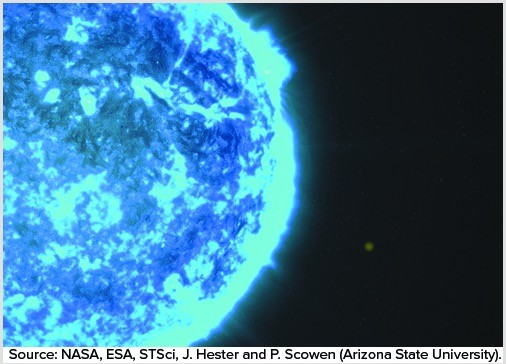What will likely happen to this object in the future?
A. The material will continue outward and remain in interstellar space or become incorporated in other objects.
B. It will continue to consume its hydrogen through nuclear fusion and will emit electromagnetic radiation.
C. It will continue to evolve with stars going through their evolution.
D. The ejected material could be disbursed, with the material remaining in close proximity to it.
Answer: B
You might also like to view...
Why are noble gases infinitely soluble in noble gases?
A) The noble gases are attracted to each other by induced dipole-induced dipole attractions, but there is only one attraction per molecule. B) These are the smallest atoms on the periodic table. C) The molecules do not interact with each other, excluding other molecules. D) Noble gases can be mixed homogeneously in any proportion.
When did the last ice age begin?
A)150 years ago B)500 years ago C)10,000 years ago D)1.5 million years ago E)2.6 million years ago
Identify four key migration policy disputes along the U.S.-Mexico border and describe the alternative views on each
What will be an ideal response?
If there are over 100 elements on the periodic table of elements, it would stand to reason that there would be millions of ways these elements could combine to form minerals. However, there are only 4000 named minerals
Why might there be so few minerals on Earth when there are so many possible combinations? What will be an ideal response?